East JavaLocated in the easternmost portion of Java Island, East Java is an autonomous region of Indonesia. Its eastern boundary is marked by the narrow Bali Strait, which separates Java from Bali by around 2.29 kilometers (1.42 mi). Java's northern and southern borders are bordered by the Java Sea and the Indian Ocean. To the west, it shares a land border exclusively with the province of Central Java. In the northern Bali Sea, to the east, there are the Kangean islands and several smaller island groups; to the north are the Masalembu archipelagos. The province is located in eastern Java and encompasses the island of Madura, which is connected to Java by the longest bridge in Indonesia, the Suramadu Bridge. The second-largest city in Indonesia and the country's capital is Surabaya, which is also a significant economic and industrial hub. The biggest region on Java's island and in East Java is the regency of Banyuwangi. 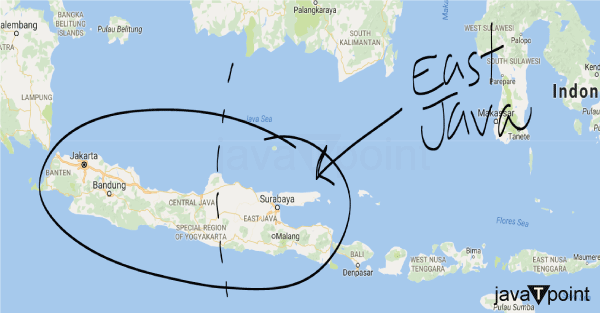
East Java is Indonesia's second-most populous province by population, with a total area of 48,036.84 square kilometers (18,547.13 sq mi). As of the 2010 Census, the province had 37,476,757 residents, making it the second-most populous province in terms of population in Indonesia; the 2020 Census revealed an increase to 40,665,696 individuals, and the official estimate for mid-2022 was 41,149,974. The greater Surabaya metropolitan region contains over a quarter of the country's population. Javanese, Madurese, and Chinese people are just a few of the various ethnic groups that call East Java home. Altogether, 94% of the population of East Java is Muslim, the majority among the world's religions. There are also other religions practiced, such as Hinduism, which is followed by the Balinese, who reside in the easternmost part of the province that borders Bali, and the Tenggerese in the Bromo Tengger Semeru National Park. Other religions include Buddhism, Confucianism, and Christianity, which are primarily practiced by immigrants from Eastern Indonesia and North Sumatra, as well as the Tionghoa people. Although Javanese and Madurese are the most widely spoken languages in Indonesia, Indonesian is the official language of both the province and the country. The Surabaya dialect, spoken mostly in the city of Surabaya, is known in Javanese as Suroboyoan or Surabayaan. Various tourist attractions are available in East Java. Mountains, beaches, caverns, and waterfalls are just a few of the natural landmarks. The many unique tourist destinations located in practically every regency or city in East Java include Ijen Volcano in Banyuwangi, Baluran National Park in Situbondo, and Bromo Tengger Semeru National Park. For most people, agriculture is their primary source of income at this place. On terraced slopes, rice is farmed as the primary crop. On undulating hillsides and in lowlands along the coast, many crops are grown, such as tea, coffee, rubber, maize, spices, tobacco, sugarcane, copra, cassava, and botanical fibers. Highlands are the place where cinchona and kapok are farmed. Transportation equipment, paper, processed food, drinks, machinery, glass, chemicals, leather and rubber goods, shipbuilding, automotive assembly, textile mills, metallurgy, and petroleum are among the industries in the province. Along with Pasuruan, Probolinggo, Malang, Blitar, Kediri, Madiun, and Mojokerto, Surabaya is connected to many other important cities via a network of highways and trains. HistoryAge of IslamIt is still being determined when Islam came to Java. The tomb of Fatimah Binti Maimun, which dates from 475 AH (1085 AD), is located in the village of Leran in Gresik Regency, and some academics believe that Islam first arrived in Java in the 11th century. The tomb also provides evidence of Arab traders from the Middle East visiting Java's northern shore as early as the 11th century. In addition, a number of Islamic graves were found at Trowulan, which is near the location of the ancient Majapahit palace and is now a part of the Mojokerto Regency. East Java was visited by Ma Huan, a Chinese Hui traveler, in the fifteenth century. The narrative of the nations he visited on the Ming treasure voyages is then told in the novel Yingya Shenglan, which was written afterward. He said that at that time, three separate ethnic groups lived in Eastern Java: the local Javanese, Chinese Muslims who originated in present-day Guangdong province, and Arabs from the Middle East, the ancestors of the contemporary Arab Indonesians. Following the fall of the Majapahit Empire in Java in the sixteenth century, a large number of Majapahit nobles were sent to the neighboring island of Bali. A tiny, remote community, on the other hand, has continued to practice Hinduism and is located in the Bromo Tengger Semeru National Park in the Regencies of Pasuruan, Probolinggo, Malang, and Lumajang. Those who stayed in Java were compelled to convert to Islam. The Tenggerese are referred to as them. About 30 settlements in the remote Tengger highlands house their 100,000-person population. Cities along Java's northern coast began to grow and flourish, eventually turning into bustling ports when Islamic sultanates began to rule the island. A prosperous and significant port with a large Chinese population, Tuban was one of them. It exported a large amount of food and imported a wide range of Moluccan goods because it was a Majapahit port and the starting point for the Moluccas. Hinduism and Buddhism were no longer Java's two main religions towards the end of the 16th century as Islam took their place. Before the da'wah came and was carried out by the island's leaders, the spread of Islam was initially fairly quick and welcomed by the general populace. Colonization by EuropeansIn 1522, a contract was signed in Malacca by the Sunda Kingdom and the Portuguese Empire, establishing the first link between Javanese people and European colonial forces. The Portuguese were only present in Malacca on the Malaysian Peninsula and the Maluku Islands following the treaty's collapse. The first known Dutch presence on the island dates back to a 1596 voyage led by the Dutch explorer Cornelis de Houtman, including four ships. The Islamic sultanates in Java's interior had come under the influence of the Dutch by the end of the 18th century. In 1811, the British took control of Java at the start of the Napoleonic Wars. With Sir Stamford Raffles serving as its Governor-General, Java temporarily joined the British Empire. According to the terms of the Anglo-Dutch Treaty of 1814, Britain gave Java back to the Netherlands in 1814. Climate ConditionsAt lower elevations, the climate of East Java is savanna and tropical monsoon; at higher elevations, it is subtropical. In general, East Java has less rainfall than the western half of Java Island. With a 100-day rainy season, annual precipitation averages 1,900 mm. A 19 to 34 °C range is the typical temperature. The slopes of Mount Semeru, where Ranu Pani is located, can see temperatures as low as -4 °C, which results in frost and a minor accumulation of snow. Places to Visit in East JavaThe ideal place for tourists to go is East Java. Mountains, beaches, caves, and waterfalls are just a few of the region's attractions. Consider visiting sites in the Batu and Lamongan regions if you enjoy playground games. Here are some of the must-see places when visiting East Java: 1. Mount Bromo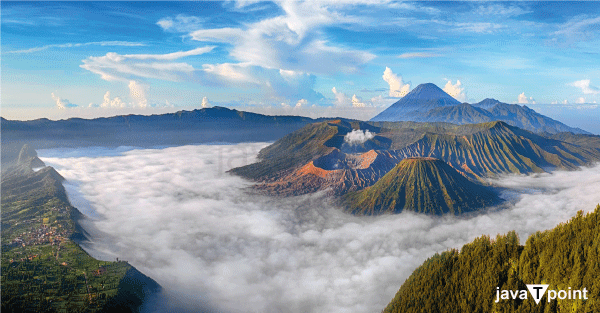
East Java's iconic mountain is Mount Bromo. The enormous sand sea is where you will first arrive. You'll experience a desert-like feeling as you make your way from the parking lot to the summit of the mountain. Another spectacular sight is the mountain range visible in the distance. You will need to climb in order to reach the summit; it will take approximately 500 steps to get there after a good hour of walking in the sand. When you get there, you can watch the sun emerging from the fog; it is a very beautiful experience. Every year, especially during the summer, Bromo receives thousands of foreign visitors, mostly from the European region. They like to visit Mount Bromo, which rises 2,329 meters above sea level, so they can witness its beauty by themselves. If you are not physically well enough to climb the mountain on foot, you can hire a horse to take you to the base of the Bromo Volcano and then take the stairs from there to the top. 2. Ijen Crater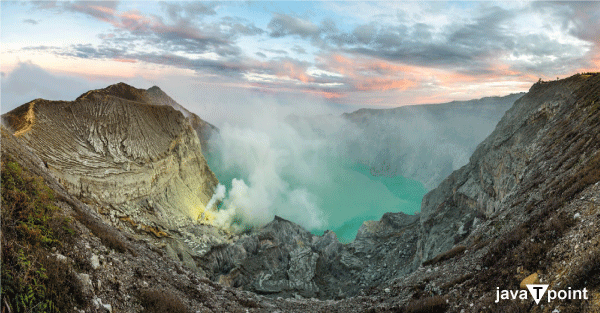
Ijen Crater is now the second East Java landmark. The mountain's crater, which lies near Banyuwangi, provides a stunning view of the sulfur lake's brilliant turquoise water. Sulfur continues to erupt from the mountain crater. People who wish to experience a simple hike while admiring the stunning mountain scenery can definitely visit this location. The unusual sulfur mining operations in Ijen are its main draw. For the purpose of bringing the sulfur boulders down, dozens of people begin digging in the early morning. In addition, Ijen Crater is home to one of the outstanding natural phenomena in the world, i.e., the blue fire. This mountain's crater region spreads blue like fire in the early morning hours. To ensure that the sun's rays do not block out this incredible event, you must begin your trek around 1:00 or 2:00 in the morning. 3. Angkut Museum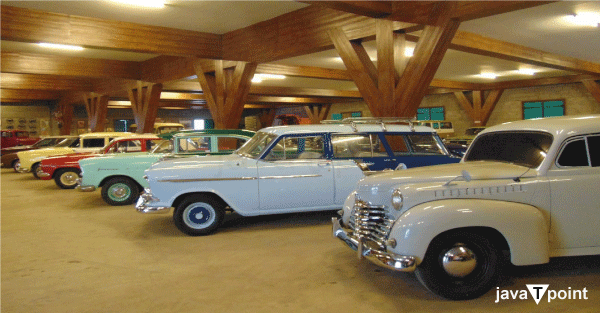
East Java's capital, Batu City, is where you can find the Museum Angkut. A wide variety of historical and contemporary vehicles for transportation are on display in the museum. It draws visitors and collectors from around the world since it has a wide variety of bicycles, motorcycles, vehicles, and small airplanes on exhibit. The museum spans a space of up to two hectares and has a themed portion in addition to its assortment of vehicle collections. The museum's design incorporates elements from the Hollywood to Ancient Europe neighborhood. Additionally, the Museum Angkut frequently hosts a procession akin to a funfair. The Museum Angkut region is a great spot for a picture stop because it has a collection of more than 300 automobiles. 4. Candi Penataran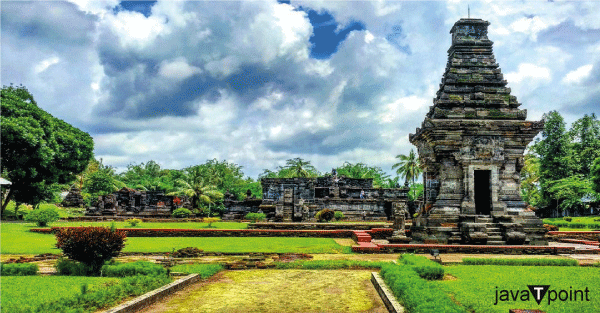
The greatest temple complex in East Java is called Penataran (or Panataran), one of the largest Hindu temple ruins complex in East Java, Indonesia. It is situated on Mount Kelud's southwest flank. In Panataran Village, Blitar, the Penataran Temple is situated at a height of 450 meters above sea level. Although Penataran Temple was found in 1815, it wasn't until 1850 that it became well-known. Sir Thomas Stamford Raffles, who at the time served as the Governor-General Lieutenant of Indonesia during the British colonial era, made the discovery of this temple complex. 5. Baluran National Park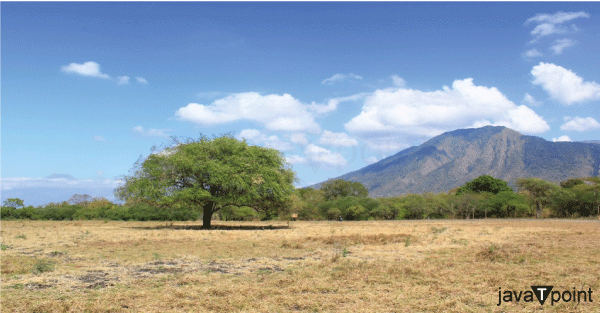
Situbondo and Banyuwangi serve as the locations of the Baluran National Park. This region has a total area of 25,000 hectares and is divided into numerous distinct parts. At the start, there is a hilly area with Mount Baluran as its highest point. Following that, there are savannas, mangrove forests close to the shore, and seasonal forest regions. Baluran National Park's extensive savanna is its most intriguing feature. During the rainy season, this area remains lush green and populated with innumerable wild animals. Bulls, wild buffalo, coyotes, deer, and leopards may all be seen by visitors at this location. 6. Gong Cave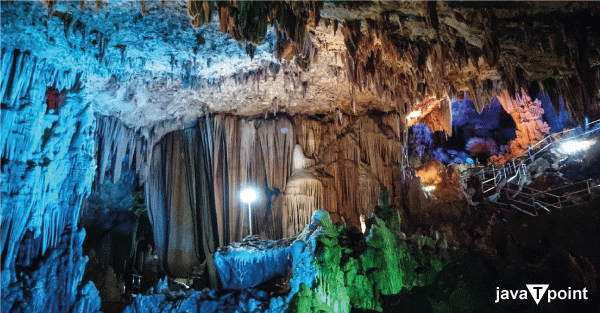
Stalactites, stalagmites, and other natural sculptures may all be found inside the stunning cave known as Gong Cave. Bomo Village, which is 140 kilometers south of Solo City, is where the cave is situated. Numerous sizable stalagmites and stalactites are visible once inside the cave. Javanese names like Selor Giri, Selo Pakuan Buwono, and Selo Bantara Angin were given to some of the stones developed over millions of years to make them appear more beautiful and give them a mystical feeling. The cave's name refers to certain rock formations that, when struck, produce a loud ringing sound. 7. Coban Rondo Waterfall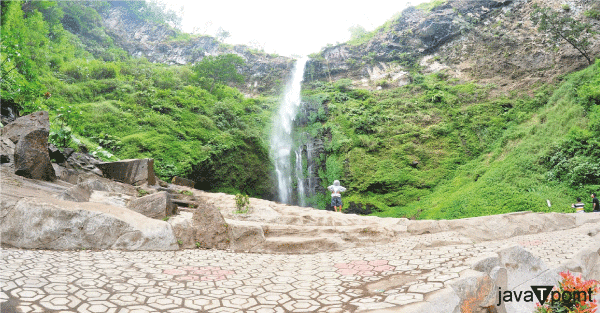
One of the well-known attractions in Batu Malang City, East Java, is Coban Rondo Waterfall. This waterfall welcomes guests with three attractions and is situated on the mountainside. Of course, the first thing to notice is the water puddles that protrude from the hilltop and provide the impression of a dewy morning despite how hot the day seems. A lovely atmosphere makes up the second. This location has a lot of deep trees because it is situated at the base of the mountain. Animals in the wild, such as apes, may descend in the morning or afternoon in search of food or to wait for passing visitors who frequently feed them. Mancakrida region is the final view of the attraction. Besides, a variety of enjoyable outdoor activities are available for visitors to enjoy. People may also enjoy various games that need agility, including flying fox and tree climbing. There is also a maze nearby that is ideal for photo-seeking. It is close to the main area. 8. Red Island Beach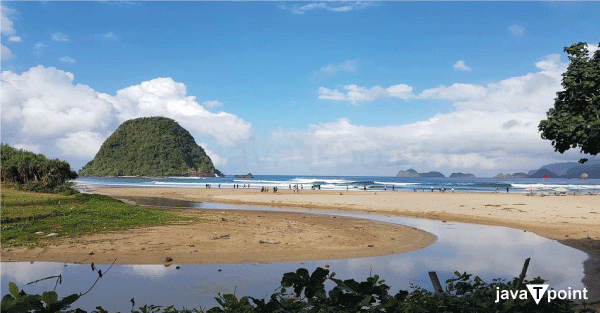
In close proximity to the stunning island of Bali, Red Island is situated 60 km south of Banyuwangi's city center. During your visit, you may lean back, relax, and take in the sound of gentle waves lapping against the white sandy beaches. To reach Red Island (also known as " Pulau Merah"), a magnificent white-sand beach surrounded by palm trees and pandanus, one should go via the nearby towns and windy local roads. With waves that can reach heights of 4 meters during low tide and span distances of up to 3 kilometers, it makes for the ideal tourist destination and the best surfing location as well.
Next TopicJava Barb
|
 For Videos Join Our Youtube Channel: Join Now
For Videos Join Our Youtube Channel: Join Now
Feedback
- Send your Feedback to [email protected]
Help Others, Please Share










